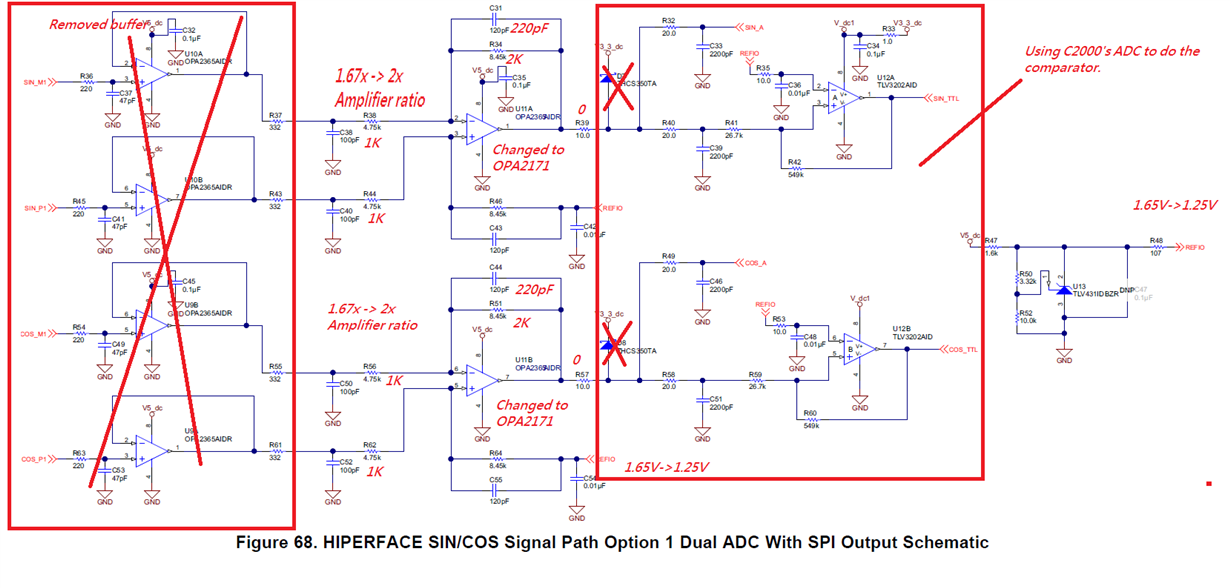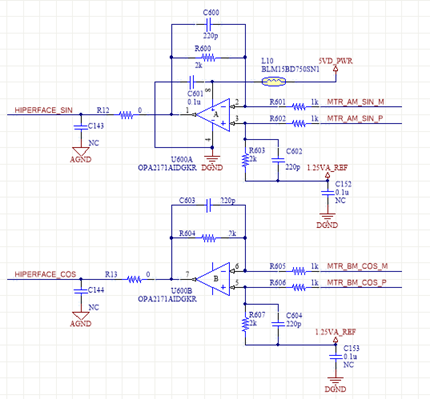Other Parts Discussed in Thread: OPA2171, OPA2365, OPA171, OPA365
Customer is modifying the TIDA-00202's circuitry of the SINE and CONE Signal conditioning for hyperface requirement.
There are some R, C and OPA changed(Removed buffer, change gain value, filter, OPA..). Please find the schematic.
Customer prefers to use existing OPA of the OPA2171(BW:3MHz) instead of OPA2365(BW:50MHz) on the design. Is there any side-effect?
Hiperface application on the communication rate is just 250KHz, they think OPA2171 would be good enough on Hyperface design. Is this correct?
Customer: WW class
Max. Motor Speed: 3000rpm/205KHz
Schematic based on TIDA-00202
Customer Schematic.



